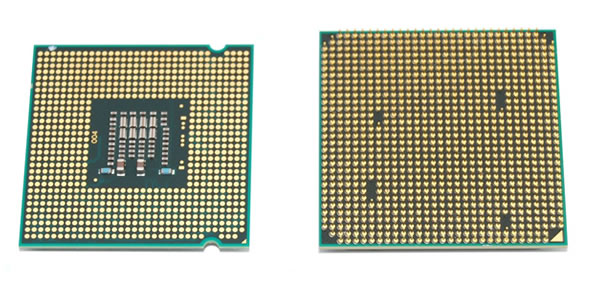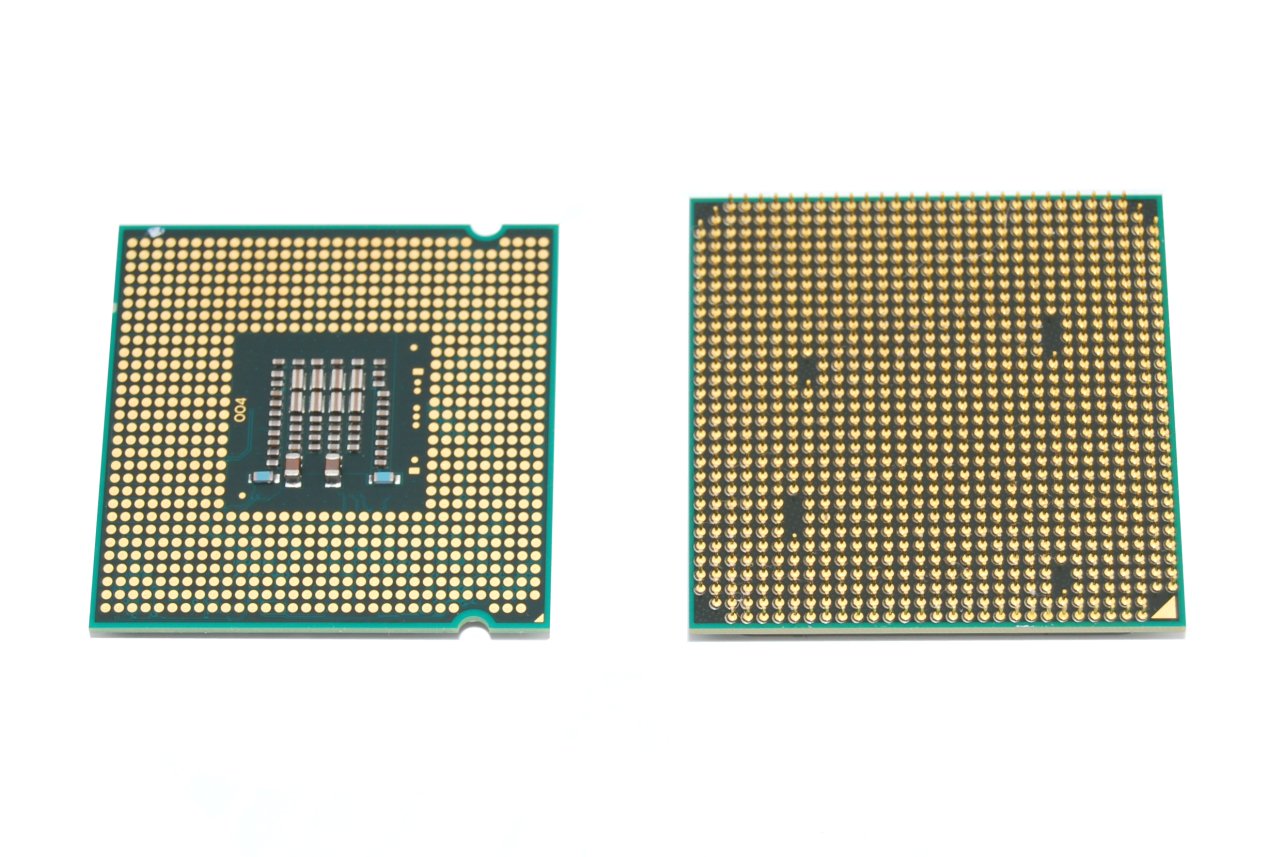Intel Processors
Intel Core i5 750 = $195
Without question this modestly clocked 2.66GHz quad-core processor is the most powerful product featured in this round-up. Whereas the Phenom II X4 processors carried a 6MB L3 cache, the Core i5 750 bumps this figure to an even larger 8MB L3 cache.
The Core i5 750 was designed for the Intel LGA1156 platform that was introduced as a cheaper alternative to the LGA1366 socket used exclusively by the more expensive Core i7 series. The Core i5 750 received Intel's Turbo Boost technology, while Hyper Threading was disabled. This is not a processor previous Intel owners can upgrade to by just plugging a new chip. Those coming from older LGA775 platforms will be required to purchase a new motherboard and likely some DDR3 memory as well.
Officially, the Core i5 750 is meant to work with supporting P55 motherboards, though it can also work on H55 and H57 motherboards. Keep in mind that when using a H55 or H57 motherboard, the video connections on the I/O panel will not work as they are designed for Core i5 6xx and Core i3 5xx series processors that carry an onboard GPU.
Intel Core 2 Quad Q9400 = $190
Despite the introduction of the LGA1156 platform for mainstream/budget users, Intel still sells their older LGA775 processors. End of life for these should be coming sooner rather than later, but in the meantime they are readily available and sold in abundance. In fact, we purchased all the Core 2 processors for this article to give you a better perspective and straight comparison between the different platforms, old and new.
To a certain extent any Core 2 desktop processor can now be considered obsolete as Intel doesn't plan to release any new models or chipsets for this family. There's obviously no reason to invest in the LGA775 platform when building a new computer, however these CPUs remain the only option for those looking for a cheap and easy way to upgrade older LGA775 processors.
The Core 2 Quad Q9400 is grossly overpriced in our opinion, and we feel Intel is squeezing as much as they can out of customers that invested in the platform. The Q9400 operates at 2.66GHz and features a 6MB L2 cache (2 × 3MB) with no L3 cache to speak of.

Intel Core 2 Duo E8500 = $190
The Core 2 Duo E8500 is another older Intel processor that in our opinion is selling for a premium without justification. At $190 the E8500 is a tad more expensive than AMD's flagship quad-core. With just two cores at its disposal, operating at 3.16GHz with a 6MB L2 cache, the E8500 is not a processor we recommend purchasing. Saving up for an LGA1156 or AM3 upgrade is probably a wiser move.
Including this processor in our round-up will give us a good perspective on how the newer releases perform against last generation offerings.
Intel Core i5 650 = $185
The Core i5 6xx series is not our favorite processor series to say the least. Designed for mainstream consumption, these Intel processors use the latest 32nm manufacturing process, while also featuring a 45nm GPU on the same package. Quite an innovative and impressive design, though at $185 the Core i5 650 is hardly a bargain and it’s the most affordable processor in the series.
For roughly the same price the much more powerful Core i5 750 can be purchased. The Core i5 650 forfeits two cores as it is just a dual-core processor with Hyper-Threading support. Again, this is a lot of money for a dual-core processor. Clocked at 3.2GHz the Core i5 650 is no slouch, though its 4MB L3 cache is half the size of the cache featured on the Core i5 750.
However, this CPU series' biggest threat comes from the cheaper Core i3 5xx series, as the Core i3 540 and 530 processors cost just $140 and $120, respectively. The only difference between these two series is Turbo Boost, the Core i5 6xx series has it while the Core i3 CPUs lack it. By default the Core i5 650 operates just 133MHz faster than the Core i3 540, but costs ~$45 more.
Intel Core 2 Quad Q8400 = $170
The Core 2 Quad Q8400 is another heavily overpriced Intel processor that is remarkably similar to the slightly more expensive Core 2 Quad Q9400. Both processors have the same operating frequency of 2.66GHz using the same 333MHz FSB. The key difference is in the L2 cache, 4MB is available on the Q8400, while the Q9400 enjoys a total of 6MB.
Still for those looking at building a new computer, the Core 2 Quad Q8400 is another Intel processor you can now skip over.
Intel Core i3 540 = $140
An unlikely favorite, the Core i3 series is heavily underrated in our opinion. These dual-core processors feature 4 threads thanks to Hyper-Threading support and as I just explained, are identical to the more expensive Core i5 6xx series processors with the exception of Turbo Boost technology. In other words, if you were to disable this technology as many overclockers do, there would be no difference between the Core i3 and Core i5 6xx processors.
The Core i3 540 is still considerably more expensive than the AMD flagship dual-core processor, though the updated architecture on the Intel processor should deliver superior performance. Like the Phenom II X4 555, the Core i3 540 was designed for the latest platform and those investing in the LGA1156 platform should expect to see viable upgrade options at least for the next year or so.
Intel Core 2 Duo E7500 = $110
Finally we have the Core 2 Duo E7xxx series, which is a cut down version of the E8xxx series we mentioned just a moment ago. The key difference between these two is the L2 cache size, which has been halved from 6MB to just 3MB on the E7xxx processors. The Front Side Bus has also been reduced to 266MHz, while the Core 2 Duo E7500 operates at 2.93GHz.
This budget processor retails for around $10 more than the AMD Phenom II X2 555, but we feel it is inferior in every way. We will see that in better detail when we test all the aforementioned CPUs head to head next.
